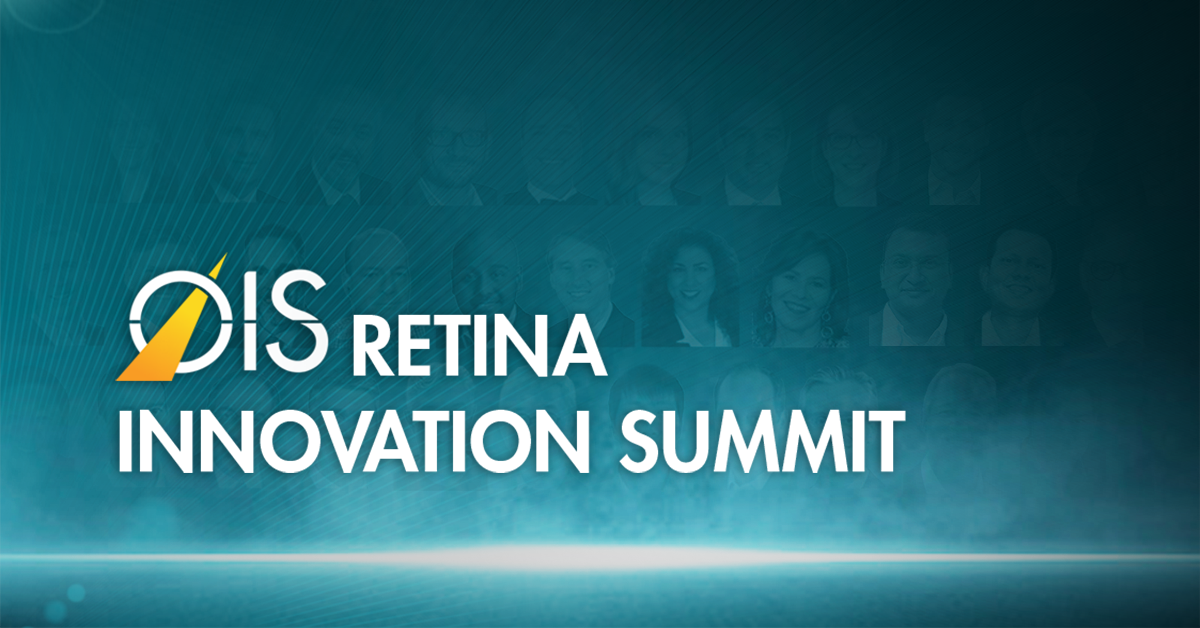OIS Retina@ASRS Sizes Up the Challenges in Retina Innovation

The first live OIS program in almost two years, OIS Retina@ASRS, was as much an update on what was portrayed as a robust innovation ecosystem directed at the treatment and diagnosis of retinal disease as much as it was about how the space has fared through the COVID-19 pandemic. But it also provided insights into challenges in the retina market—including recovering from a lost year, sizing up the growing competition in the key drug category, harnessing the potential of artificial intelligence, and attracting investors.
“You guys may have heard about this thing called the pandemic,” Firas M. Rahhal, MD, partner in ExSight Ventures and a retina specialist in Southern California, said at the outset of last week’s conference a day before the annual American Society of Retina Specialists’ meeting in San Antonio, Texas. “It’s put a gouger into everything that we do in medicine and in business, and it continues so that there have been all these challenges.”
Most prominent among those challenges, he noted, have been disrupted clinical trials. “Despite all that, somehow, and I’m not even sure how, but it may be through the will and strong efforts of the people in this room—the scientists, clinicians, our industry professionals, management professionals, the finance people, and all the stakeholders in ophthalmology innovation—somehow weathered this, pushed through and it’s been actually an incredibly highly productive year and a half in our space,” Dr. Rahhal said.
Attendees got to hear OIS Lifetime Innovator Award recipient Stanley Chang, MD, recount the challenges he’d faced in developing many of the surgical innovations he brought to commercialization.
During his own showcase presentation, REGENXBIO CMO Steve Pakola, MD, said. “It’s great to get the gang back together so to speak at OIS.”
Some 200 attendees got back together at the live session with another 30 or so participating virtually. Twenty-five companies gave showcase presentations, and another three—Apellis Pharmaceuticals, Regeneron Pharmaceuticals, and Genentech/Roche—provided pipeline updates.
Anti-VEGF Price Pressures
Another challenge for the retina market is revenue pressure on companies that manufacture drugs to treat exudative disease, most notably anti-vascular endothelial growth factor (VEGF) drugs for treating wet age-related macular degeneration (AMD), diabetic macular edema (DME) and other vascular disease of the retina, Market Scope author and analyst Peter Downs reported in his pharma market update. “Overall, the price of anti-VEGF drugs has been declining,” he said.
The big factor depressing market revenues is competition, he said. “A couple of years ago, there were only two competitors in terms of manufacturers in the anti-VEGF market in the United States,” Downs said, meaning, of course, Genentech/Roche with Lucentis (ranibizumab) and Regeneron with Eylea (aflibercept). Novartis’ Beovu (brolucizumab), approved in 2019, made it three. When Samsung Bioepis-Biogen launch Byooviz, their Lucentis biosimilar, next year, that’ll make it four. With two more Lucentis biosimilars and Outlook Therapeutics’ ophthalmic formulation of Avastin (bevacizumab) “hot on their heels,” and other anti-VEGF treatments in Phase III trials, “In five years, we could have 10 or more manufacturers competing in this space,” Downs said.
Potential of AI: Compress Time
One panel discussion focused on the role of artificial intelligence in diagnostics and therapeutics. AI, said Daniela Ferrara, MD, MSc, PhD, senior medical director at Genentech/Roche, will give drug developers the ability to design smaller and faster trials with greater power. “AI will change clinical development fundamentally for the very reason that we can’t take 10 years or 15 years to fail a molecule,” Dr. Ferrara said. “We have to fail faster.”
Her counterpart at rival Novartis, https://ois.net/?s=Hopkins, SVP and global head of the ophthalmology development unit, concurred. “I am excited about it transforming the time it takes currently to develop a drug,” Dr. Hopkins said when asked about the potential of AI. “The fact that we could have tools that could completely disrupt, that is really exciting. It means better treatments faster to patients who need them.”
Another benefit of AI that Dr. Hopkins is looking forward to is its clinical decision support potential. “It could be like having a reading center in your pocket,” she said.
Insights for Finding Investors
Raising money is another challenge innovators must grapple with, and Jason Menzo, COO of Foundation Fighting Blindness, offered his advice for raising money in the early stages.
“One of the most important things is to be really sharp either yourself or bring on an experienced executive or someone who’s done this before but would really be able to tell your story,” he said during the panel on funding and finding assets.
“From where we sit it’s not just about the technology; it’s about the team, the operational plan, being able to see and really clearly understand the drivers of value, what the milestones are, the use of proceeds, and to make sure that, as you’re coming out of gates and you’re partnering with an investor, to make sure you’ve got a really strong investor that’s committed to the vision of the scientific founders.”
